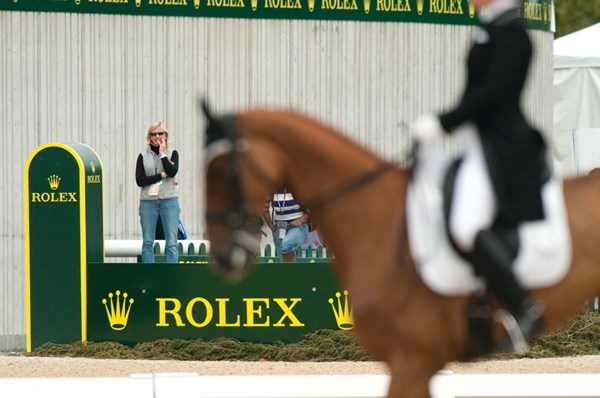
As I closed the door on my eventing career following my accident in 2012, I opened several exciting new ones. One is my continued education in show jumping. I competed in equitation classes when I was growing up and then lived in Middleburg, Virginia, where there’s a lot of hunter/jumper activity. I also enjoyed show jumping my event horses to supplement their education.
Show jumping is enormously technical and difficult, and I’m stimulated by the challenge of getting better at it. I don’t have competitive riding goals necessarily. I’m mostly determined to improve my skills. I have no physical limitations, but I do have realistic expectations, for sure.
The world of horses is very small. I have known many people in the show-jumping world, and it has completely embraced my effort and encouraged me. I’m working with my friend and eventing student, grand-prix rider Marilyn Little, and that has been great. She has a wonderful program that produces super results. I have enjoyed learning about the sport through her expertise as well as learning much more about show hunters through another friend and wonderfully successful hunter rider, Kate Conover.
In the summer of 2013, through Marilyn, I purchased a lovely Holsteiner gelding, RF Clearwater. He’s a really fun, super-talented horse, and I enormously enjoyed getting back to jumping with him. He is by the show-jumping stallion Clearway. I competed Clearwater in my first CSI in Europe and some 1.25-meter classes here in the States. I loved being able to get back in the ring again.
I’m not planning on buying any other jumpers, for no other reason than financial. I would love to have a string of jumpers, but who wouldn’t?
Eventers vs. Jumpers
Now that I’ve spent time in both the eventing and show-jumping realms, I can reflect on the different demands the two disciplines make on horses and riders. There’s no comparison between a top eventer and a top show jumper. The skill sets of both beasts are remarkable, but they are very different sports, requiring very different types of horses. The average event horse could not jump a 1.50-meter course, let alone do it again and again. The biggest fences eventers will ever show jump are 1.30 meters, but on the third day, after a long and grueling cross country, that 1.30-meter course rides like a 1.40-meter course because the horses are tired. I used to think that an eventer needed 1.30-meter scope, but now 1.40-meter scope is more suitable for that reason.
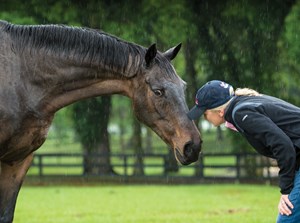
On the other hand, the average five-star grand-prix show jumper couldn’t understand a 6-foot-6 drop into water followed by a 90-degree corner and then an angled narrow coming out of the water. In most cases, I’m sure it would be unimaginable for a show jumper to recognize that as a jumping exercise.
Riders in these two disciplines, however, could teach each other some great lessons. Eventers can learn an enormous amount from show jumpers: correct rider position and horse’s way of going, coupled with technical aspects of navigating a show-jumping round. Show jumpers can learn the passionate relationship eventers have with their horses and the unconditional respect they have for their mounts. I’ve seen deeper relationships between horses and riders in eventing than I have in any other sport. In the education process, eventers learn how to clip and braid, groom and tack up, clean tack, pull shoes or tack one back on. I believe it’s important as a horseman to learn these skills, whatever your sport.
New Perspectives On Teaching
I continue to teach and coach eventers, as I have for years, but now with an even more educated approach. Through my passionate study of show jumping, I’m finding more expressive ways to describe the specifics of the sport and I’m much more articulate in describing the different aspects of an exercise. It’s built my language, vocabulary and eye for what creates a good shape for a horse, what allows him to jump carefully and what allows him to use his potential or not.
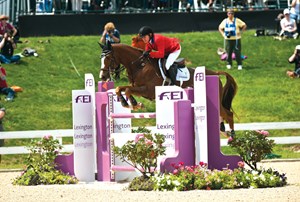
With this new focus, I’m understanding the show jumping more than ever, which keeps me abreast of where the sport of eventing is right now. It’s really quite staggering the amount that I didn’t know. I’ve been very successful throughout my career and yet I still have a massive amount to learn in show jumping. My knowledge is continuing to grow and that’s helping my teaching and coaching now for all of the phases of eventing.
Getting back to instructing, coaching, training and managing eventers’ training programs after the accident has been a journey for me. Throughout 2013, I didn’t have the stamina to stand out in the arena for very long and I would quickly tire. I started to do clinics again that fall and my stamina has increased steadily. So I am able to carry a nice complement of students of all levels. Even now, though, it’s quite tiring: Lifting rails and standards exacts a price at the end of the day.
My coaching and teaching goals haven’t changed at all. I am still absolutely dedicated to enabling a student to achieve the fundamentals and have a large base from which to draw. It’s always practice: Practice the fundamentals, the basics of jumping, the basics of dressage, the basics of position and the language of the horse.
The accident brought to the forefront for me the fact that anyone, regardless of skill level, can get seriously injured. I suppose it made me think about things a bit more, but it’s always weighed very heavily on me if any student has a fall.
New Coaching Role
I have recently been appointed coach of the Mexican eventing team. The appointment involves training the team for major events, including the Pan American Games in Toronto this summer and the Rio de Janeiro Olympic Games in 2016. I’m looking forward to the challenge because there is tremendous support in Mexico—from the army and civilians alike—for implementing a solid program to develop Mexico into a truly competitive nation on the world stage.
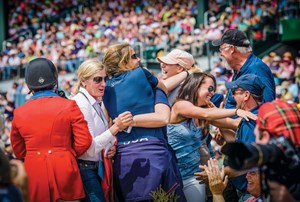
This comes at a very good time for me. I finally feel recovered from my back injury to take on this position. Since my husband, David O’Connor’s, appointment as U.S. chef d’équipe some two years ago, I have had to stand down from all involvement in this country’s High Performance committees to prevent any perceived conflicts of interest. Until then, I had served on all of the standing committees for over 25 years. Letting go of this has been very frustrating for me and forced me to consider other options, including other nations. So I am delighted to have this opportunity.
Stepping Behind The Mic
There is so much more I can learn in show jumping and dressage to be able to continue to help eventers. I’ve always enjoyed cross-country teaching and breaking it down so it can be simple in its education. To that end, I’m making a foray into the media world. I had the opportunity to work with John Kyle of FEI TV at the 2014 Rolex Kentucky Three-Day Event live webcast. I had so much fun doing that and I’m continuing to explore ideas for commentating and getting more involved in the media side of the industry. I’ve started to do a little bit of commentating in show jumping, too. I have no idea where that will take me, but I’m studying it and I’m going to try to be the best I can be at it.
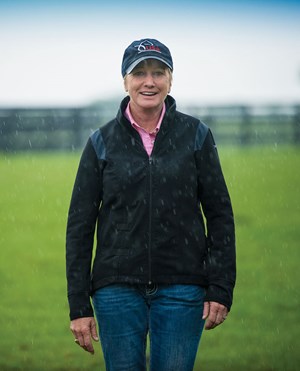
Matchmaking
In the last couple of years, I have also enjoyed working with Marilyn to import European horses for American riders in all disciplines. This is a relatively new goal for me. It is a great challenge to successfully match horses up with riders. I enjoy helping people seek their goals in riding by being instrumental in choosing the right horses for them. I believe it will increase the depth of quality of horses that Americans are riding at every level. We look for horses—young prospects, schoolmasters and everything in between—within affordable budgets, whether for a high-performance rider or adult amateur or young rider. Whatever the request, I become very excited selecting the right horse for someone and then watching that partnership flourish.
This has been a most amazing journey for me since that October morning in 2012. Probably the biggest adjustment has been realizing my limitations. Before the accident, I had no limitations physically and certainly none mentally. The mental adjustment to my physical limitations has been the most challenging so far in my life. That adjustment has been heartbreaking, and yet I believe that everything does happen for a reason. As doors close in your life, others open. I so look forward to seeing the next door. My eyes will be wide open looking through!
This article originally appeared in the June 2015 issue of Practical Horseman.










